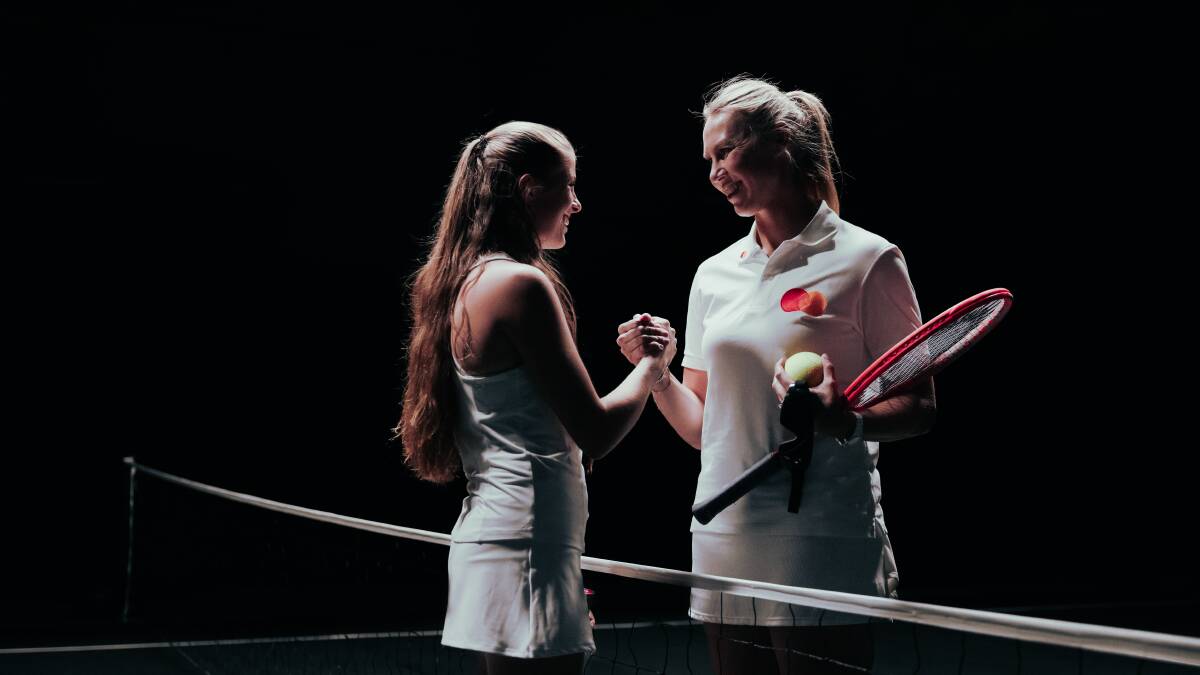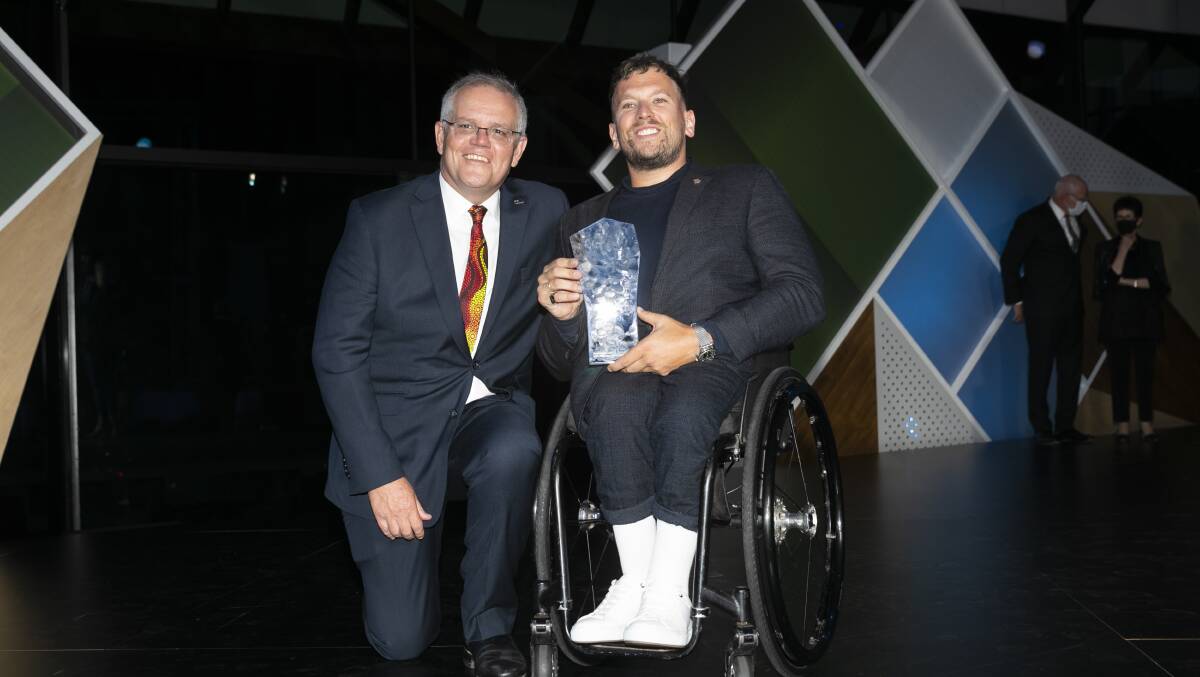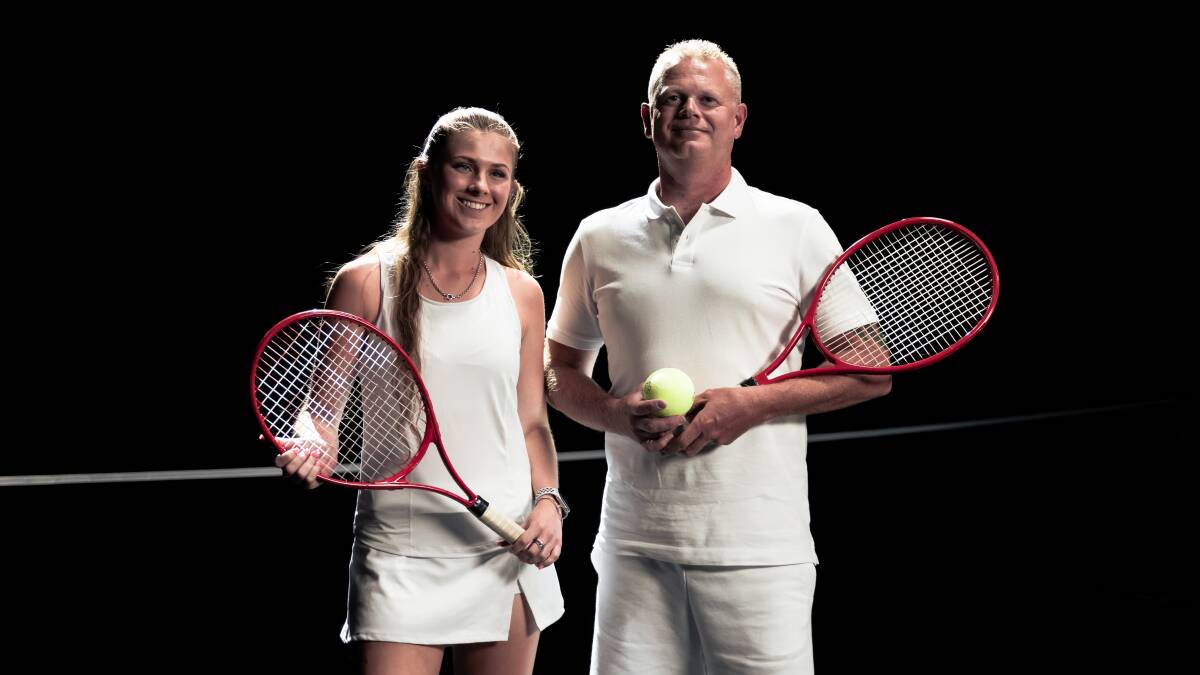For former world no.8 women's tennis champion Alicia Molik, attempting blind and low vision tennis was no easy feat.
Subscribe now for unlimited access.
or signup to continue reading
Molik recently took to the court wearing blackout glasses to simulate the game from the perspective of a person living with a vision impairment.
"I felt like a novice, a beginner," she said.
"I realised how lost I felt at this sport I'm so well equipped at, a sport I've been playing for almost 35 years."

Molik was up against blind and low vision tennis champions Courtney Webeck and Mick Leigh.
They said it was "amazing" to play the former Olympian.
"It was tough for her, with the full black out glasses," Ms Webeck said.
"Going from 20/20 sight down to nothing, it takes a while to adjust and know your surroundings, but I think she did a good job and it put it into perspective for her, to see what it is like to play for us."
Blind and low vision tennis is usually played using a smaller tennis racket and an adapted foam ball that makes a noise when it bounces.
The competitors will meet again in an exhibition match on January 23, as part of the Australian Open.
The opportunity to champion inclusivity on and off the court by showcasing the game in a new light comes as new research commissioned by Mastercard suggests that nearly two-thirds of Australians living with a disability believe Australians do not fully understand their disability.

Despite being a sport obsessed nation, the research reveals that reveals that 57 per cent of the population agree there is not enough representation of people living with a disability in sport.
Wheelchair tennis champion and 2022 Australian of the year Dylan Alcott is a prominent role model for disabled athletes.
During his Australian of the year acceptance speech Alcott said his purpose was to "change perceptions, so people with disability live the lives that they deserve to live".
It's a cause Courtney Webeck and Mick Leigh are also passionate about.
"I don't think it's promoted enough," Ms Webeck said.
"I'm hoping this campaign can bring more awareness to people that blind and low vision tennis is out there."
The research, conducted by YouGov, also found that 77 per cent of Australians with a disability have faced obstacles when it comes to participating in sports. More than half felt that it is important for people with a disability to have role models, and see people with disabilities included in popular culture and sport.

Alicia Molik is proud that her beloved sport is taking significant strides to become more inclusive.
"It's difficult to take the first step into sport when you have a disability," she said.
"It's our duty in life to include absolutely everyone.
"We have grand slam level of tennis for people with varied levels of disability, and there's courts around Australia, in regional areas, made accessible for people with disabilities.
"It's inclusive. That's the thing I hold in the highest regard about tennis, it is an inclusive sport, no matter what level you play at, there's a place for anyone. Not just holding a racket, but off the court too, people feel really valued."
IN OTHER NEWS:
At this year's Australian Open a new technology, called Action Audio, is being tested on a large scale for the first time.
Every match in the Rod Laver Arena will be available on a livestream with this accessibility feature that generates noises and sound effects when a ball bounces, or is hit, meant to help people who are blind or have limited vision follow the game.
The Australian Open will also celebrate its inaugural All Abilities Day this year on Tuesday January 24, while Mastercard is funding a Blind Sports Australia grant to grow the game at a grassroots level.















